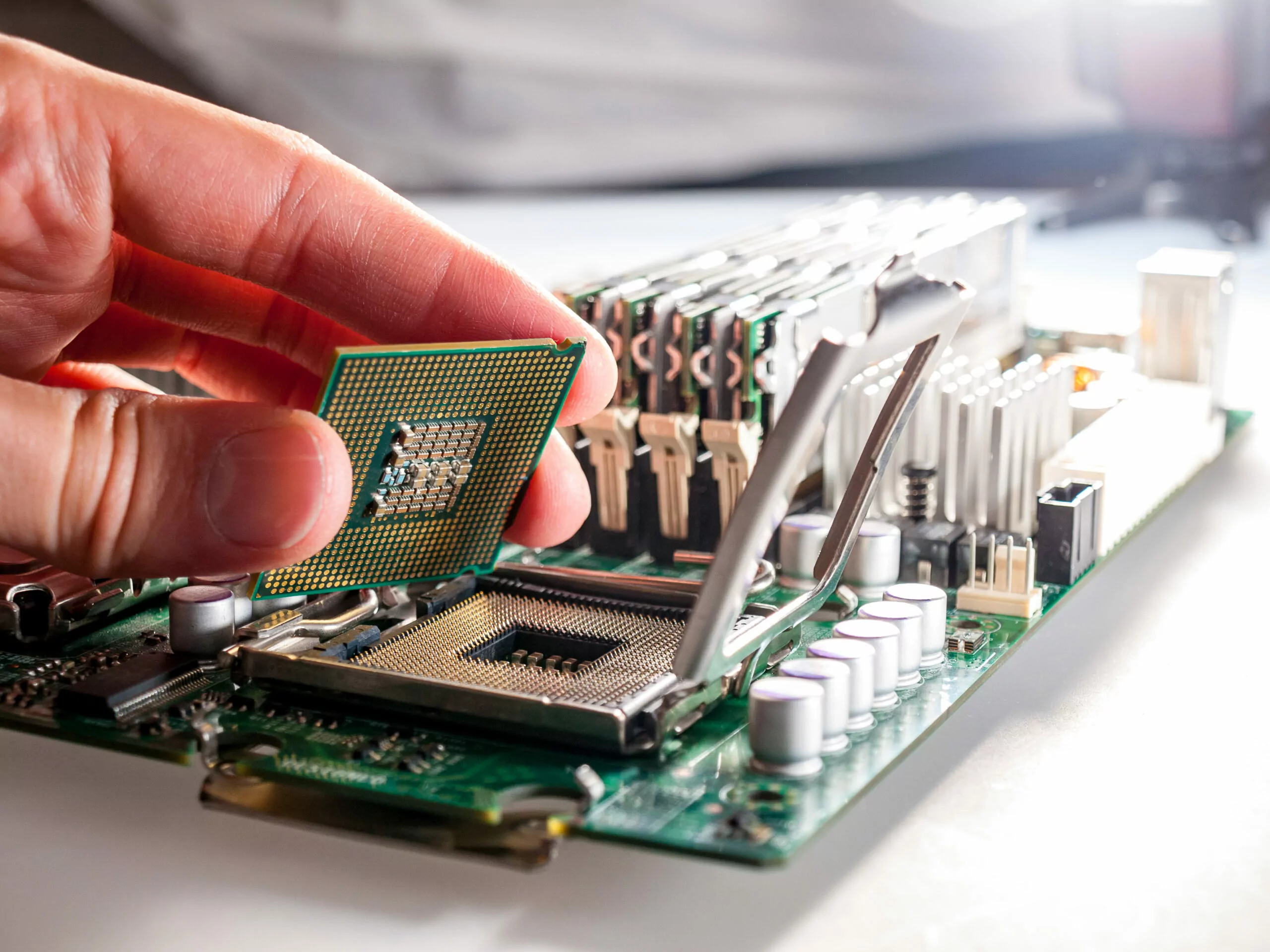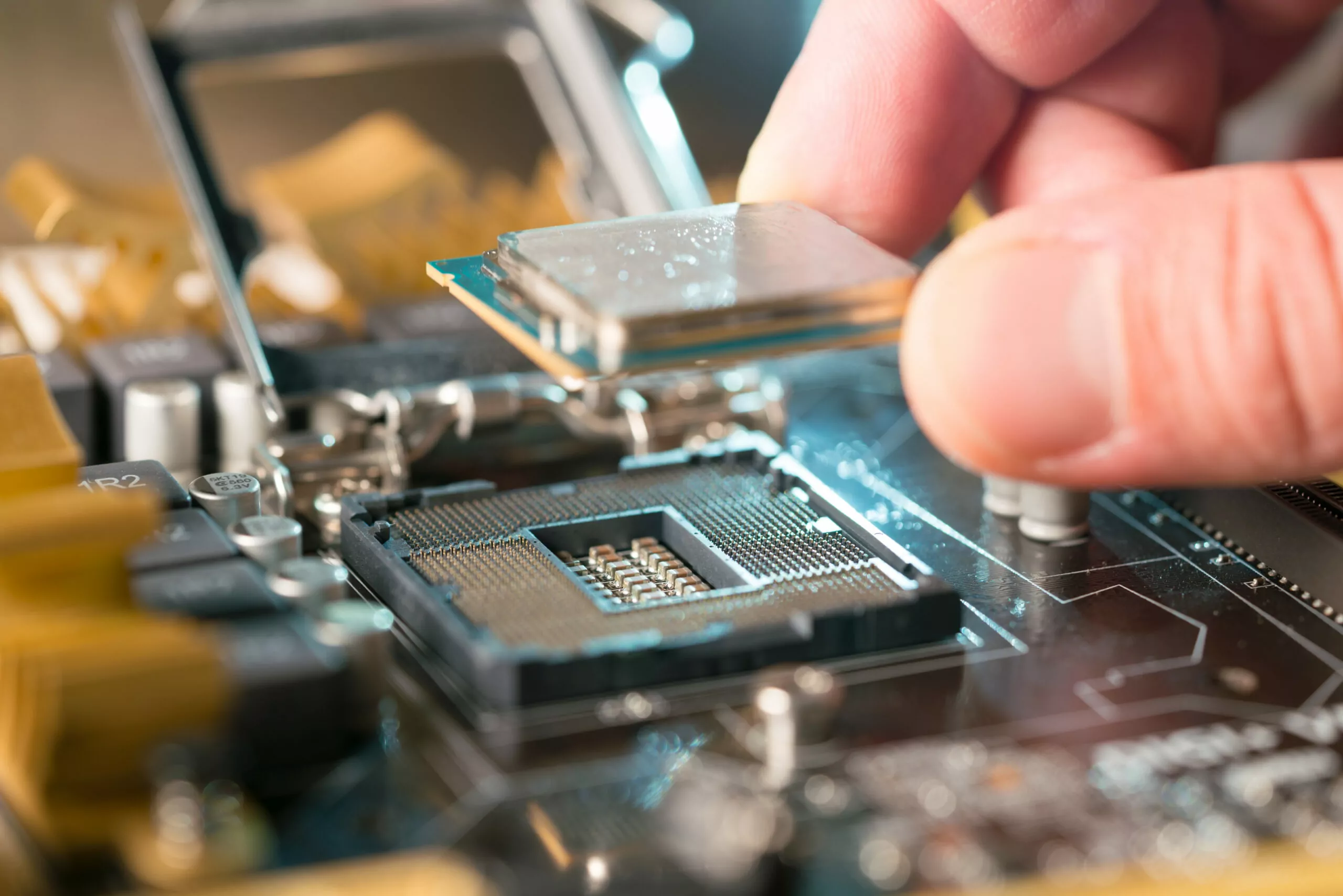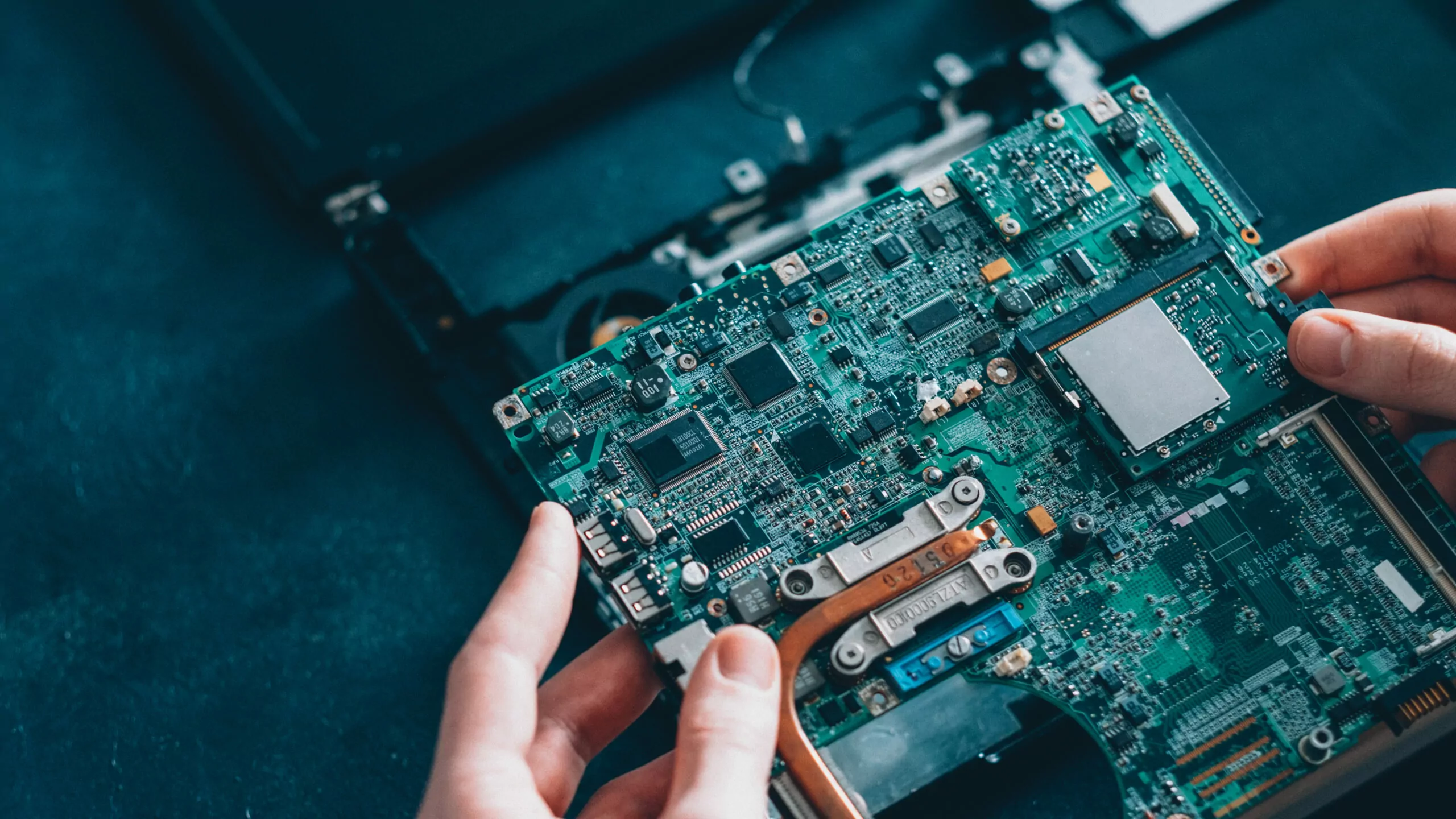Here’s everything about the motherboard with the most CPU sockets:
For the most part, motherboards only carry a single CPU socket.
You can find motherboards designed for specific server applications that might contain up to four sockets.
Supercomputers can actually link millions of CPU cores, but the design is very different.
Multiple sockets is uncommon and not always useful.
So if you want to learn all about which motherboard has the most CPU sockets and whether such motherboards are beneficial for gaming, then this article is for you.
Let’s jump right into it!

What Is a Motherboard?

In order to discuss motherboards with multiple CPU sockets, we’re going to have to lay a foundation of knowledge.
There’s a lot to cover, so let’s dive right in by talking about motherboards.
When it comes to designing and/or building a personal computer, there are a handful of key components:
- Motherboard
- Central Processing Unit (CPU)
- Memory (RAM)
- Power Supply Unit (PSU)
- Storage (such as a hard drive)
- Graphics Processing Unit (GPU)
- Case
Those are the primary components, and you need each of them to make a computer work.
You’ll find that they exist in different variations, and sometimes multiple components can be combined together (such as a CPU/GPU combination device), but that’s the essence of what you need to build a functioning computer.
I’m going to skip explaining most of those components—seeing as how we’re talking about motherboards and CPU sockets.
So, the motherboard is the central piece of hardware for the computer.
Basically, all of the other components attach to the motherboard in some way.
The motherboard handles communication between the different components (such as enabling the CPU to talk to the RAM).
It also distributes power to those components.
In essence, a motherboard is a circuit board with all of the essential design elements needed to enable computer components to work together.
In some cases, motherboards might also be called logic boards.
These are different names for the same essential piece of hardware for a computer.
Considering all of this, it shouldn’t surprise you to know that a motherboard will have a designated location where you can attach a CPU.
What Is a CPU Socket?

This brings us to the CPU socket.
On any motherboard, the CPU socket is where you literally plug the CPU into the motherboard.
There is usually a locking mechanism on the motherboard that securely holds the CPU in place.
But, for this to really make sense, I probably need to spend a minute talking about CPUs.
The Central Processing Unit is the component of a computer that does the raw calculations.
When you run a program on a computer, something has to actually carry out the steps of code.
The CPU is largely responsible for that part of computer processing.
It really is the brain of the system, and the CPU, more than anything else, will determine how fast and/or powerful a computer is.
I’m definitely simplifying things here.
There are cases where a GPU can offload some of the core processing for computer functions, but that can get complicated, and we don’t really need to get into it today.
What matters for this discussion is that the CPU does the literal thinking for the computer.
As for the socket, it has to be designed specifically for the CPU that is installed.
So, if you have a motherboard with a socket for the most recent Intel I-series processors, that same socket won’t work with AMD processors.
For any one socket, there might be a handful of CPUs that are compatible, but there will be plenty more that are not.
There are a lot of factors that impact compatibility, but one of them is pin structures.
You see, CPUs have a bunch of metal pins on one side.
Each CPU will have a specific number of pins, and they are arranged in an exact design.
Those pins actually plug into the CPU socket on the motherboard.
So, you need a socket that has the right pin configuration for the CPU you want to install.
There’s a lot more that we could get into, but this is enough background to start talking about multiple CPU sockets on a single motherboard.
How Many CPU Sockets Are Typically on a Motherboard?

Now that we’re getting into multiple CPU sockets, there’s one thing you should know first.
In the vast majority of motherboard designs that you can find on the market, there is only one CPU socket.
There are a lot of reasons for this, and I’ll cover a few, but the gist is that PCs are combining one CPU with one motherboard to build one computer.
Perhaps the biggest reason why this is the case in modern computers is the multi-core/multi-thread design.
More than a decade ago, computer engineers figured out how to make CPUs with multiple cores.
Essentially, a single CPU can function as multiple CPUs, all combined into a single device.
Multi-core CPUs are great at multitasking and typically outperform single-core CPUs, even when all other design aspects are equal.
On top of that, you have multi-thread designs.
This is a way to design computer systems so that you get virtual cores.
Simplifying a complicated topic, virtual cores allow a CPU to function as though it has more cores than are physically present.
Between these two concepts single CPUs are as powerful as multiple CPUs would otherwise be.
For the vast majority of use cases, you simply don’t need multiple CPUs to have a powerful computer.
All of that said, there are cases where you will find motherboards with multiple CPU sockets, and I’ll explain all of that in the next few sections.
Which Motherboard Has the Most CPU Sockets? (2 Types)

Even though most motherboards only have one socket, there are specific cases where putting multiple CPU sockets on a single board makes sense.
These involve server designs.
A server is ultimately a computer, but it’s not designed for the same functions as a PC.
A PC is designed to carry out tasks that you, as a single user, would need to do, such as writing a paper for school or playing video games.
Servers are usually designed to process large amounts of data very quickly in order to serve large numbers of users at the same time.
While you might have a PC at home, servers are hosting websites, running Google searches, securing files for companies, and doing more professional tasks.
For some of these applications, you’ll find server motherboards with multiple CPU sockets.
To give you the shortest answer possible, server motherboards have the most CPU sockets.
Don’t worry; I’ll get into more detail than that.
#1 Consumer Grade
If you’re looking to shop around and find a consumer-grade motherboard with the most CPU sockets, there are a lot of options.
There’s not really an arms race to put more and more sockets on a single motherboard.
I’ll get into why that is the case when I talk about pros and cons a little later.
If you browse for a bit, you’ll find plenty of motherboards with two CPU sockets.
Less frequently, you’ll find motherboards with four CPU sockets.
More than four sockets is extremely uncommon when it comes to consumer-grade products.
There is no one motherboard that stands above the rest.
You’re just picking from the handful of options that provide four sockets on a single board.
#2 World Record
If you want an absolute world record for CPU sockets, then we have to get into supercomputers.
Now, this is kind of cheating because supercomputers are not designed the same way as traditional PCs.
A supercomputer doesn’t have a single logic board with tons and tons of CPU sockets.
But, supercomputers are all about putting as many CPU cores as possible into a single device, and it’s what makes them the most powerful computers in the world.
When it comes to that, the current world record is the TH-IVB-FEP Cluster.
It’s built around Intel Xeon architecture, and the supercomputer has over 4.98 million cores.
Clearly, that’s more than you need for any personal project, but if you’re asking about fitting the most CPUs into a single build, this is the world record.
Do you remember earlier when I said that there isn’t an arms race to put more sockets into motherboards?
Well, there is still an arms race to build the most powerful supercomputer.
Because of that, this record might not hold.
It’s really hard to say.
But what we can say is that millions of cores can be combined into a single supercomputer device.
That suggests that there isn’t an exact physical limit to how far engineers can push the concept.
Above all else, computers can certainly manage more CPU sockets and cores than you will ever need for personal use.
Why Are There So Many CPU Sockets? (2 Reasons)

Adding sockets to a motherboard is really about increasing the total CPU output capacity for a single device.
When you need more raw power, this is a way to do it.
Then again, this design philosophy does come with its own pros and cons.
#1 Pros of Multiple Sockets
There’s really only one reason to put more sockets on a single motherboard.
You want to maximize the processing power of a single computer.
It’s pretty simple math.
More CPUs really will equate to more total processing power.
Of course, you can also link multiple servers together, so you don’t always need to stack a bunch of CPUs on a single motherboard, but multi-socket designs can sometimes help with power efficiency.
You can also save space with this kind of design.
#2 Cons of Multiple Sockets
But, there’s a reason you don’t see computers everywhere running multiple CPUs.
For the most part, it’s because this kind of design is expensive and hard to scale up.
Like I already said, you can link multiple servers together to function as a more powerful computer.
You can do that whether the motherboards on those servers have one or more CPU sockets.
So, if you’re using cheaper servers that have one CPU each, it’s easier to find the funds to expand your total number of servers, one at a time.
If you use multi-CPU designs, then adding one more server will be a lot more expensive.
It’s more difficult to budget.
Are Motherboards With Multiple CPU Sockets Good for Gaming?

Let’s wrap this up by explaining the last bit that you might be wondering.
More CPU sockets leads to more CPU power, so getting a motherboard with four sockets would be great for gaming, right?
Actually, no.
Using multiple CPUs in this way typically leads to poorer gaming performance.
It’s a bit counterintuitive, so allow me to explain a few ideas.
The first has to do with distance.
When you have a multi-core CPU, the distance from one core to the next is measured in nanometers.
They’re very, very close to each other, so there is virtually no time delay when information is sent from one core to another.
Meanwhile, the distance from one CPU socket to the next is measured in centimeters.
Centimeters might not feel like large distances, but a centimeter is seven orders of magnitude bigger than a nanometer.
If it takes an electrical signal one nanosecond to travel one nanometer (this is a hypothetical number), then it would take that same signal about a hundredth of a second to travel a centimeter.
Now, think about how fast computers are.
They carry out billions of calculations each second.
Introducing a delay even at the level of a hundredth of a second would actually slow things down dramatically, and that can happen with multi-socket computer setups.
At the same time, there’s another issue, and it has to do with the efficiency of coding.
Basically, video games are not designed to use multiple CPUs.
They are designed to use multi-core CPUs, but that’s not the same thing.
The set of coding instructions that would help a multi-core CPU play a game very efficiently would be largely useless in telling a multiple-CPU computer how to play the game well.
So, because the games themselves are not optimized for this type of computation, multi-socket computer setups usually don’t game as well as more standard PC builds.
If you want the best gaming experience, then check the hardware recommendations for the game you want to play.
It will tell you what hardware is optimized to run with the game, and that will always be the best choice for your computer build.

